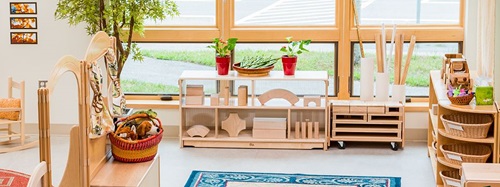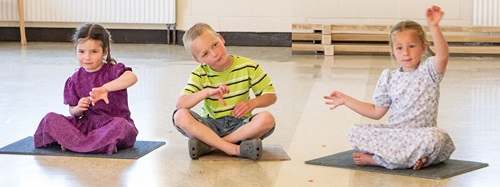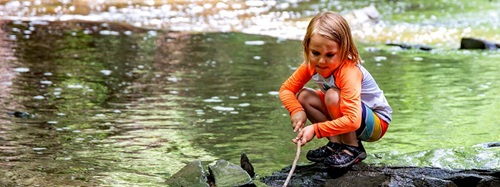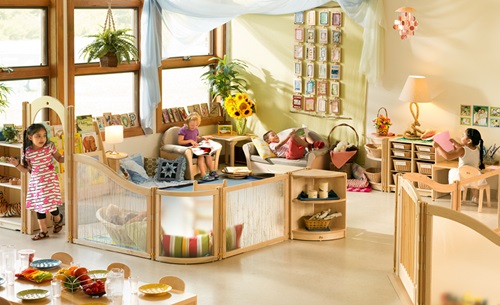An Overview of the Montessori Method
| January 2009More than 100 years ago, Dr. Maria Montessori, Italy’s first female physician, inspired the birth of a worldwide educational movement.
Drawing upon her scientific background and clinical understanding, Dr. Montessori observed how young people learn best when engaged in purposeful activity rather than simply being fed information. She recognized that children's cognitive growth and development requires the construction of an educational framework that respects individuality and fulfills the needs of the “whole child.”
Her pioneering work created a blueprint for nurturing all children— from gifted to learning disabled—to become the self-motivated, independent, and life-long learners. That is the ultimate goal of today's pre-eminent educational reform movement.
A Brief History
Dr. Montessori first became interested in education while caring for mentally challenged children in a psychiatric clinic in Rome. Her innovative practices—including a combination of sensory-rich environments and hands-on experiential techniques—soon elicited positive learning behaviors from children previously left behind by society.
Montessori continued shaping her learning model by opening “A Children's House” in 1907 for impoverished pre-school children. Her philosophy, materials, and practices have spread around the globe and have been implemented in a variety of cultural settings. As more and more schools incorporated core elements of the Montessori model —multi-age classrooms, early childhood education, and prepared environments—her namesake method became widely recognized as being ahead of its time.
What is Montessori?
The hallmark of a Montessori program is the prepared classroom environment. Each classroom is equipped with materials that first teach through the senses and later lead to reading, writing, advanced mathematics, problem solving, geography, science and cultural studies. Visual arts, music and movement are interwoven through out the days’ activities.
Montessori infant programs foster the development of trust and assist in the natural development of the child’s personality within a nurturing environment. Infants learn by touching and responding to gentle touch, and by moving freely as they interact with their surroundings. The freedom to move and explore is essential to any infant's development. Whether they are enthusiastically manipulating an interesting activity, quietly exploring the secrets of a mirror, scurrying about, or calmly enjoying a song, infants learn emotional and intellectual independence through movement.
Toddlers in a Montessori classroom are assisted as they fulfill the basic human tasks of trust, separation, independence, and self-control. Toddlers are rapidly changing in this developmental age. They learn to make order out of their surroundings, to move with intention and coordination and to communicate with others. Teachers observe each toddler and anticipate the next activity that will entice him to develop through his senses. Independence is encouraged in all things and toileting skills become a major part of the curriculum. Montessori teachers who work with this age group must have an incredible energy and deep sensitivity.
Early childhood (3-6 years) classrooms are the most common age range found in Montessori schools. Montessori early childhood programs offer the most comprehensive curriculum for parents who have the goal of preparing their child for elementary school. Nearly everything within the walls of a Montessori classroom is child-sized. Children “work” with authentic Montessori materials including a wide range of high-quality, age-appropriate materials—objects such as wooden blocks, sand trays, textured fabrics, and glass beads, to name just a few. All of the materials are designed to be self-teaching. Children learn to solve problems, see natural connections in knowledge, learn skills related to practical living, and therefore, expand their imaginative thinking.
Perhaps the hands-on materials, carefully selected and placed on child-height shelves, everything in its place and on view for children to select, is the element that joins Montessori schools together. Materials other than open-ended ones have a control of error built into their design. Children can see and learn from their own mistakes without a teacher pointing out the error. This is one of the many aspects of a Montessori classroom that fosters independence.
Operating on the principle of freedom within limits, Montessori schools inspire children to work at their own pace, alone or with others. Trained, certified Montessori teachers encourage the growth of self-motivated, independent children by balancing active, self-directed learning with small group collaboration and peer teaching. Classes are comprised of a range of ages and abilities. Older, more experienced children take on the role of peer mentors, reinforcing their own skills and experiencing the responsibilities of leadership through helping others. Younger children, in turn, enjoy the daily stimulation of older role models, while children of all ages learn to respect each other in a warm atmosphere of acceptance and joy.
As students move into multi-aged elementary classrooms, and their cognitive processes mature, hands-on materials are used to teach new concepts. Abstract thinking takes hold and students problem solve using group discussion, research and writing skills, and technology. Field trips, many over several days, become the hands-on experiences for Montessori students in this age range. Classrooms still promote the freedom to choose and students set daily and weekly personal agendas to assist in the completion of the curriculum work. Collaborative projects, science experiments, oral, written, and audio/visual presentations take careful planning and larger amounts of time. Respect, responsibility, and character development are woven into curriculum units.
Middle and High School Montessori students learn through doing as they experience personal rapid growth and change. Students are empowered as they hone their individual and group cooperation skills. Schools promote community service, community building, independent research projects and internships in real work situations. Frequently an internship period is spent in the lower grades of the school enabling middle and high school students to participate in cross-age teaching. Students learn the skill of giving presentations to peers and community groups. Many Montessori schools encourage student-run businesses to exercise cooperative and practical application of the skills learned in class and during their internships. School socials, including plays, movies, and dances are part of the curriculum as well.
Montessori Today
Remarkably, Maria Montessori’s visionary ideas remain viable concepts that have profoundly influenced the entire educational landscape.
Today Dr. Montessori's visionary ideas flourish as the cornerstone of a thriving educational practice. There are thousands of Montessori schools in the U.S. including hundreds of programs in public and charter schools. The American Montessori Society, www.amshq.org with its headquarters in NYC, has over 10,000 members, and close to 1,200 member schools and 92 accredited teacher education programs, throughout the US and internationally.









